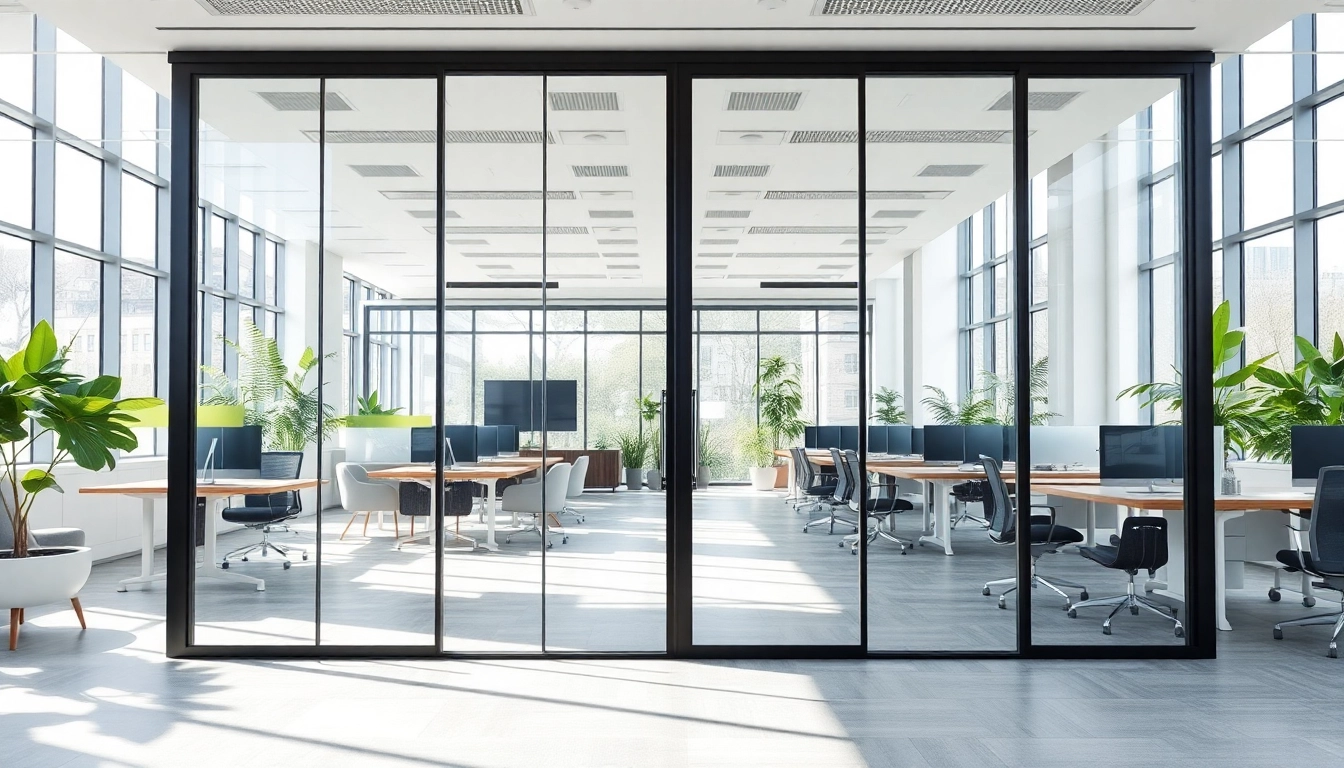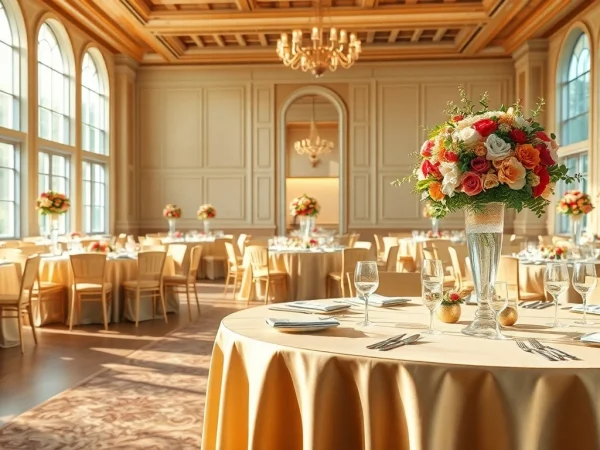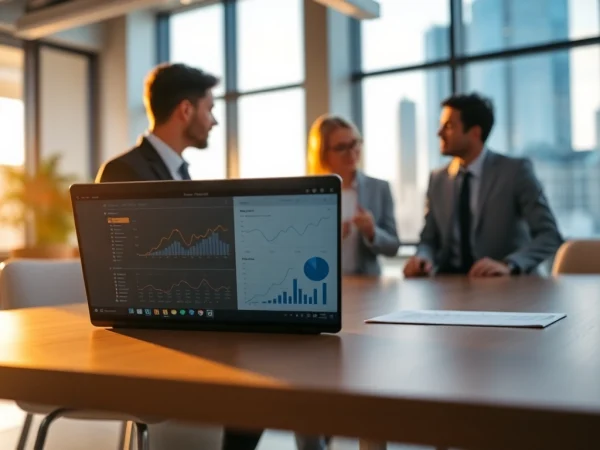Enhance Your Space with Movable Glass Partitions: Versatile Solutions for Modern Workplaces
Understanding Movable Glass Partitions
What Are Movable Glass Partitions?
Movable glass partitions are innovative architectural solutions that act as flexible room dividers, allowing spaces to be reconfigured quickly and efficiently. These partitions are typically made of large glass panels that can be folded, slid, or stacked away, offering an adaptable approach to space management. With their sleek, modern appearance, movable glass partitions enhance the aesthetic appeal of a room while providing natural light and transparency, which are crucial in creating open and inviting environments. By integrating movable glass partitions into various spaces—such as offices, restaurants, and retail stores—designers can optimize utility without sacrificing style.
Key Features and Benefits
Movable glass partitions come with an array of features that set them apart from traditional wall systems. These features include:
- Flexibility: Easily reconfigure space layouts to suit different purposes, improving functionality.
- Sound Insulation: Advanced systems often provide effective sound control, allowing for privacy and concentration even in open environments.
- Natural Light Accessibility: Glass partitions allow light to permeate spaces, creating bright, uplifting interiors.
- Aesthetic Versatility: Available in various designs and finishes that can complement any decor style.
- Ease of Use: Many systems are designed for easy operation, enabling quick adjustments between open and closed configurations.
Different Types of Movable Glass Partition Systems
Movable glass partitions can be broadly categorized based on the mechanics and design styles. The main types include:
- Folding Glass Partitions: These partitions fold like an accordion, allowing for full opening of spaces. They are ideal for larger areas needing extensive flexibility.
- Sliding Glass Partitions: These systems slide open along tracks, and are great for areas where floor space is limited, ensuring a smooth transition between open and closed setups.
- Stacking Glass Walls: Group glass panels together at one end when not in use. This style is particularly effective in arenas and event spaces.
- Frameless Glass Walls: Provide a sleek, modern look without apparent frames, allowing for unobstructed views that enhance spatial continuity.
Applications in Various Industries
Corporate Offices
In the corporate world, office layouts are evolving towards more open and collaborative environments. Movable glass partitions facilitate this transition by creating multipurpose spaces. Meetings can be conducted in a quiet corner, and then the same space can be quickly reconfigured for presentations or group brainstorming sessions. This versatility supports dynamic teamwork, adaptability to change, and optimal use of square footage.
Retail Spaces
Retailers also benefit significantly from movable glass partitions, which can create pop-up shops, special product showcases, or event areas within existing stores. These partitions allow retailers to segment their offerings and control customer flow effectively. For instance, a clothing store might section off a fitting area using stylish glass panels, ensuring a unique shopping experience while maintaining visual access to the rest of the store.
Hospitality Environments
Hotels and restaurants utilize movable glass partitions to enhance guest experiences by allowing for customizable dining areas and event spaces. This flexibility can maximize occupancy while providing guests with privacy or an intimate atmosphere when necessary. By employing sound-insulated glass panels, proprietors can also control ambient noise levels, ensuring comfort for diners and hotel guests alike.
Installation and Maintenance Best Practices
Choosing the Right System for Your Needs
Before installation, it’s crucial to evaluate the specific requirements of your space. Consider dimensions, the frequency of configuration changes, and the level of sound insulation needed. Engaging with a professional installer can provide insights into which movable glass partition system best aligns with your operational requirements. An expert will factor in elements like weight, support structures, and the desired aesthetic.
Steps for Professional Installation
Installing movable glass partitions typically requires professional assistance due to the precision and technical knowledge involved. Key installation steps include:
- Site Inspection: A thorough evaluation of the installation area is necessary to assess walls, floors, and access points.
- Planning and Design: Collaborate with design and installation teams to finalize layout and ensure all architectural considerations are met.
- Preparation of Support Structures: Correct framing, door tracks, and alignment must be established before the glass is fitted.
- Installation of Glass Panels: Glass panels must be handled carefully to avoid breakage and ensure correct fitting.
- Testing Mobility and Functionality: Once installed, testing the partitions to confirm they operate smoothly and meet design expectations is crucial.
Long-term Care and Maintenance Tips
To ensure the longevity of movable glass partitions, specific maintenance practices should be implemented:
- Regular Cleaning: Use non-abrasive cleaners and tools specifically designed for glass surfaces to maintain clarity and shine.
- Inspect Tracks and Hardware: Check sliding mechanisms and hardware at least once a year to address wear and tear before it affects functionality.
- Adjustments and Alignments: Professional servicing may be needed annually to ensure panels remain aligned and seals are intact.
Design Considerations and Aesthetic Options
Integrating with Interior Design Styles
Movable glass partitions offer flexibility not only in functionality but also in design aesthetics. They can be designed to complement various interior styles, from ultra-modern minimalist looks to more traditional settings. Achieving coherence within the overall design theme can be done by selecting appropriate frame finishes and glass types, like frosted, tinted, or clear glass.
Color and Finish Choices
Designers can choose from diverse color palettes and finishes for frames, including matte, gloss, and even textured options. Such customization permits a perfect match with surrounding furnishings and decor elements, enhancing overall room cohesiveness. Glass choices include options for tempered or laminated glass for added safety and durability.
Customization Options
Most manufacturers offer customization in terms of size, shape, and additional features to accommodate specific client needs. Options like integrated blinds, decorative overlays, or smart glass technology (which can switch from clear to opaque), further enhance the functionality and aesthetic appeal of movable glass partitions.
Performance and Efficiency Metrics
Sound Control and Privacy Features
Modern movable glass partitions offer varying degrees of sound insulation, a key advantage in open-plan environments. Measured in Sound Transmission Class (STC) ratings, many high-end partitions can achieve up to 50 STC, allowing for significant sound reduction. This is particularly beneficial in offices where privacy is a necessity for focused work. Additionally, the inclusion of acoustic seals can further enhance sound dampening when partitions are closed.
Energy Efficiency Benefits
Movable glass partitions can also contribute to energy efficiency in commercial settings. By allowing natural daylight to illuminate spaces, they reduce the dependence on artificial lighting, potentially lowering energy bills. Moreover, they can be designed with energy-efficient glass, which can help regulate indoor temperatures, maintaining comfortable conditions year-round.
Cost Considerations and ROI
Investing in movable glass partitions can often be justified through cost savings on operational efficiency and maintenance. The initial installation cost may be higher than traditional wall systems, but the return on investment (ROI) can be substantial due to improved space utilization and reduced energy consumption. Additionally, businesses that provide a high-quality environment for employees and customers often see increased productivity and satisfaction rates, thus further enhancing overall profitability.










